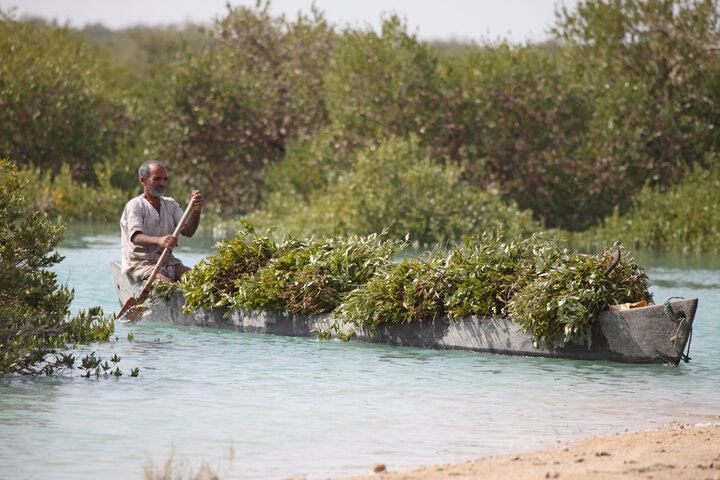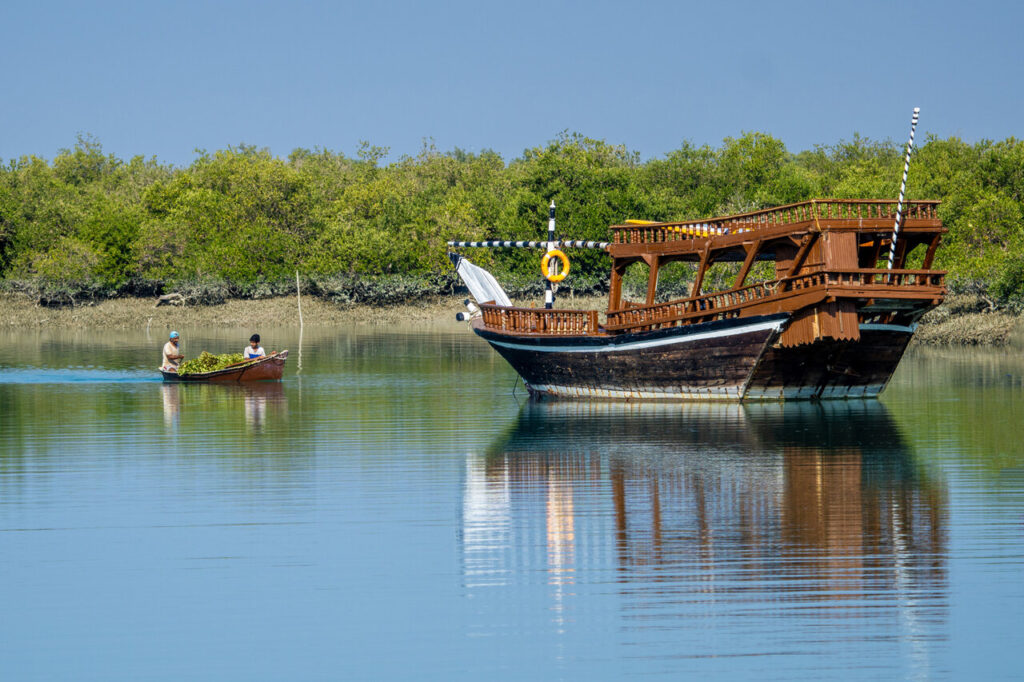Tehran – Surrounded along the coast of Qeshm Island in the Persian Gulf of southern Iran, the Soheli Mangrove forest is a testament to natural resilience and human dedication.
This UNESCO-designated biosphere reserve has become more than just an ecological treasure. It represents a harmonious partnership between the environment and the people of Soheli Village. Through innovative conservation efforts and sustainable tourism practices, communities have transformed mangrove forests into a living example of environmental management.
The commitment of the villagers shines through their unique initiatives: grow mangrove seedlings in their homes, build observation towers for birdwatching, and preserve the ancient Holi ships of their ancestors. These initiatives demonstrate how traditional knowledge and modern conservation can work together to protect fragile ecosystems, while creating meaningful experiences for visitors.

Living mangrove ecosystem
The Hara forest on Qeshm Island forms one of Iran’s most important marine ecosystems, with the Soheli Mangrove forest serving as a beating heart. These intertwined root systems create sanctuaries for flamingos, herons, and kingfishers that cover between the branches. The forest’s calm waterways have become a destination for both researchers and nature lovers, drawn into its quiet beauty and incredible biodiversity.
However, this natural wonder faces an increasing threat. Increased seawater levels and increased salinity test mangrove endurance, while plastic waste carried by ocean currents exerts its primitive state. The community remembers when Harvest almost devastated these forests, and this memory burns with determination to protect what remains.
Community Green Thumb
At Soheili, conservation begins at home. Villagers have developed an ingenious method for restoring mangrove forests. They carefully collect breeding bodies, the distinctive pencil-shaped seeds of mangroves, and grow them in buckets of seawater inside the house. For four months, these future trees will grow under careful eyes, strong enough to face the challenges of tide flats.

Once the seedlings are strong enough, the community gathers and plant them on their respective high tide-filled muddy forest floors. This practical approach has achieved prominent results, with thousands of new mangroves taking root in recent years. In addition to planting trees, the program also planted something of equal value in the community. It is a shared sense of responsibility for the transgenerational environment.
The joy of visiting
The wooden observation deck, rising above the green canopy, offers visitors a breathtaking view of the mangrove forest.
This carefully built platform serves multiple purposes. Birdwatchers are welcome to observe larger flamingos and ospreys who frequently visit the area, providing researchers with valuable surveillance opportunities, generating income and supporting further conservation work.

The tower has become more than a point of view. It is a bridge between the community and visitors. Local guides share ecosystem knowledge, point out migration patterns and explain the balance of mangrove delicate life. Through these interactions, tourists have a deep understanding of the importance of the forest, and villagers take pride in their role as protectors of this natural heritage.
Sailing through history
The traditional Holiboats of the village represent more than transport. They have cultural memories of the people of Sohiri. These traditional wooden containers are made without claws and using technology passed over generations, and once formed the backbone of local fishing and trade. Today they serve as floating ambassadors of the village’s maritime heritage.
Twice a year, the quiet waterways bring to life with the excitement of Holi’s boat races. Villagers demonstrate their skills in navigating narrow mangrove channels.
morning

